Planning a trip to the beautiful Bahamas?
The U.S. State Department placed the Bahamas on an “Exercise Increased Caution” warning, emphasizing the prevalence of violent crimes.
Here’s what to be aware of about the Bahamas safety-wise:
- Crime Rate: It’s moderate, so stay cautious.
- Danger Zones: Be extra careful in Grand Bahama (Freeport) and Nassau’s “Over the Hill” area.
- COVID Safety: No restrictions, but cases exist, so take precautions.
- Natural Disasters: Hurricane season is from August to October, and earthquakes are rare.
- Carbon Monoxide: Three incidents reported; carry a portable CO detector.
- Beach Safety: Pay attention to the flag system for swimming safety.
- Traveling Solo or with Family: It’s doable, but exercise increased caution.
Now let’s talk about all these things you need to consider for your safety while visiting the Bahamas so you can relax and have a worry-free vacation.
Are you planning a last minute trip to Bahamas? We’ve put together all the resources you’ll need for a fun & safe travel:
🛌 Best & Safest Places to Stay in bahamas:
👉 The Reef at Atlantis – 2 swimming pools, Airport shuttle, 14 restaurants
👉 SLS at Baha Mar – Garden, Pets allowed, Sea view
👉 The Island House – Outdoor swimming pool, Family rooms, Fitness centre
👉 Comfort Suites Paradise Island – Outdoor swimming pool, Free WiFi, Bar
⛱️ Fun Activities & Tours in Bahamas:
👉 Nassau Food Tasting and Cultural Walking Tour
👉 Exuma Island Hopping & Swimming Pigs Tour with Lunch from Nassau
👉 ATV Rentals in Nassau Bahamas
🚗 Best & Safest Bahamas Transportation Services:
👉 Airport Pickup Service – Welcome Pickups
👉 Rent a Car – DiscoverCars
🙏 Stay Safe While Travelling:
👉 Safetywing (for medical insurance)
👉 VisitorsCoverage (for trip insurance)
Travel Advisory for the Bahamas
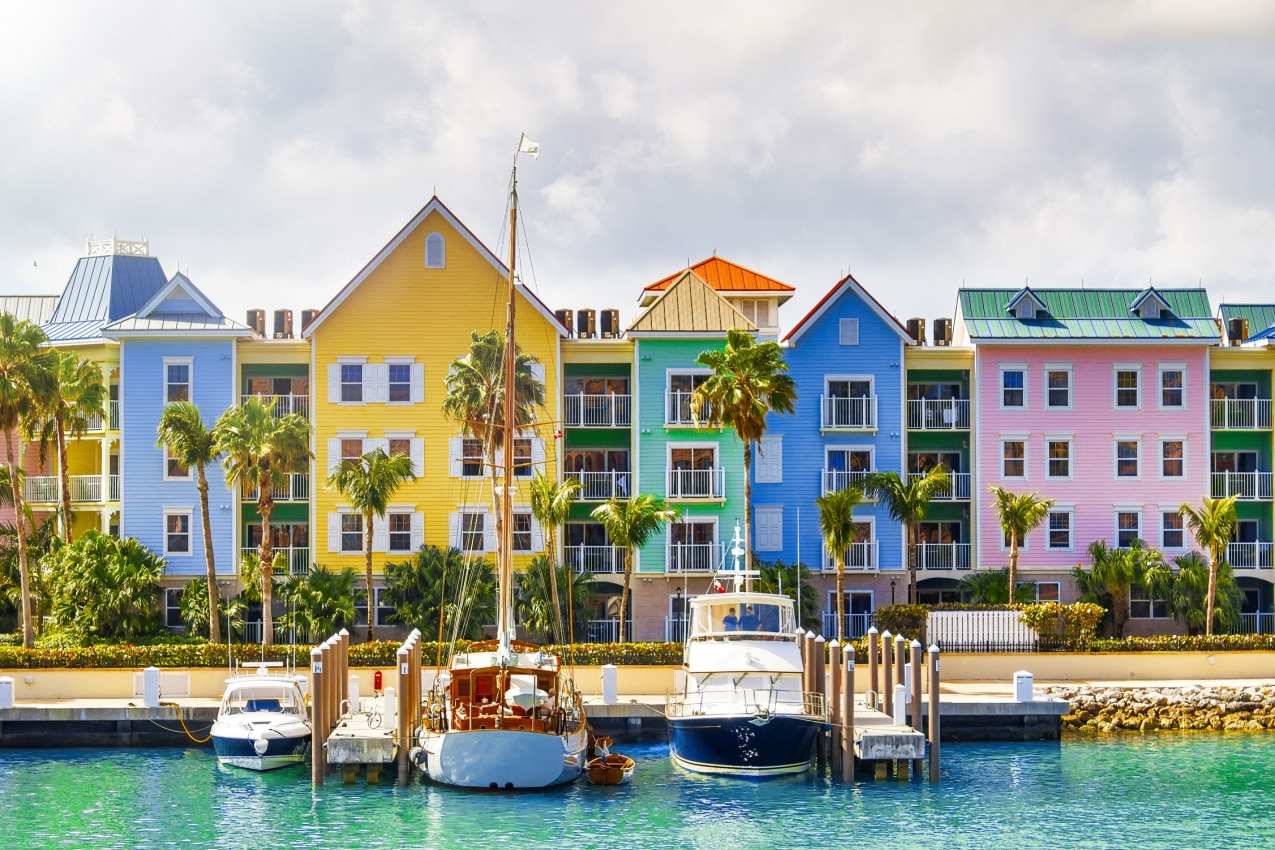
Each year, the U.S. State Department issues a comprehensive travel advisory for every country worldwide, including the Bahamas. These advisories are categorized into four levels, each reflecting the safety conditions in the given destination, providing detailed insights about the risks there and clear recommendations for staying safe.
The categories are as follows:
- Level 1: Exercise Normal Precautions — This is the lowest advisory level, indicating that while there is some minimal risk, travelers can confidently enjoy their visit to the destination
- Level 2: Exercise Increased Caution — Travelers are advised to be mindful of heightened safety and security risks, yet they are encouraged to visit the destination if they exercise caution
- Level 3: Reconsider Travel — Travelers are strongly discouraged from traveling there due to the presence of severe safety and security risks at the destination
- Level 4: Do Not Travel — The most critical advisory level with a very prominent likelihood of life-threatening risks. If a danger were to happen here, the U.S. government may have limited capacity to help its citizens, so it’s strongly recommended to not travel there or leave as soon as possible
The U.S. State Department issued a Level 2 warning for the Bahamas due to a spike in homicides in the country. The warning advises extreme caution in the eastern portion of New Providence Island, where gang violence is cited as the primary motive for crimes.
The advisory also emphasizes the risk of violent crimes which are common in both tourist and non-tourist areas. Travelers are urged to keep a low profile, be aware of their surroundings, and not resist if confronted by thieves.
The State Department also highlighted potential risks associated with poorly maintained watercraft and the lack of consistent regulation for recreational water activities. Additionally, tourists are cautioned against swimming alone due to recent shark attacks in the Bahamas.
While you can still visit the Bahamas, do so only with the right precautions. We discuss those in more detail in the section “Exploring Bahamas Solo or With a Family: Is It a Good Idea?” After all, your safety is a top priority.
A Comprehensive Look at Bahamas Crime Rates
Based on Numbeo, the Bahamas has a crime rating of 56.76, which places them in the middle of Numbeo’s crime index.
Over the past three years, there has been an observed increase in reported crimes. The major categories of crimes primarily fall into two groups: crimes against a person and crimes against property.
Here are the specific numbers for these major crimes reported from 2020 to 2022, based on the official annual crime analysis by the Royal Bahamas Police records.
| Crimes Against Person | 2020 | 2021 | 2022 |
| Homicide | 73 | 119 | 128 |
| Attempted Homicide | 32 | 43 | 47 |
| Manslaughter | 2 | 3 | 4 |
| Rape | 45 | 48 | 55 |
| Attempted Rape | 5 | 6 | 10 |
| Unlawful Sexual Intercourse | 163 | 125 | 139 |
| Armed Robbery | 313 | 415 | 555 |
| Robbery | 92 | 96 | 124 |
| Attempted Robbery | 11 | 15 | 10 |
| Crimes Against Property | 2020 | 2021 | 2022 |
| Burglary | 127 | 81 | 98 |
| Housebreaking | 606 | 522 | 507 |
| Shopbreaking | 546 | 495 | 524 |
| Stealing | 950 | 1,127 | 1,038 |
| Stealing from Vehicle | 869 | 690 | 410 |
| Car Theft | 230 | 296 | 330 |
Most of the crimes are concentrated on the New Providence (Nassau) and Grand Bahama (Freeport) islands, especially in Nassau’s “Over the Hill” area.
The crimes from these criminal groups primarily impact the local population and are less likely to affect tourists. Nevertheless, crimes like theft and assault are not confined to specific regions in the Bahamas — they can occur at both tourist and non-tourist locales. Therefore, travelers are urged to exercise caution, avoid dangerous areas, and remain vigilant throughout their stay in the country.
Police Presence in the Bahamas
Travelers prioritize destinations where they feel secure and protected, and this significantly influences their overall travel choices.
The Royal Bahamas Police Force was established on March 1st, 1840, and initially comprised sixteen members. Fast forward to 2023, it has evolved into a modern, complex law enforcement agency with over 4,000 officers, reserves, and police civilians.
The Permanent Secretary in the Ministry of National Security, Mrs. Sherman-Peter, states that the government has dedicated substantial resources to ensuring the Royal Bahamas Police Force remains at its peak by investing in cutting-edge technology, advanced training, and top-tier vehicles.
Both the government and the police force are acutely aware that the tourism industry is the driving force of the Bahamian economy and are actively committed to fighting crime and safeguarding both citizens and tourists. Mrs. Sherman-Peter confirms that the crime against tourists is low. Nonetheless, it remains paramount for tourists to exercise extreme caution.
Navigating the New Normal: Ensuring COVID-19 Safety in the Bahamas
As of October 2023, there have been 38,084 confirmed cases of coronavirus in the Bahamas, with 844 unfortunate fatalities and 36,366 individuals who have successfully recovered.
The relatively stable numbers have led the Government of The Bahamas to eliminate the pre-arrival COVID-19 testing, vaccines, and mandatory Bahamas Travel Health Visa. This means that all visitors are now welcome to travel freely to the Bahamas. Additionally, there is no longer a curfew in place, and wearing masks in public places is no longer mandatory.
In the event that you experience symptoms like shortness of breath, nausea, or loss of smell or taste during your vacation, the Bahamas provides options for private COVID-19 testing. You can get tested at hospitals, clinics, or laboratories and receive the results via email or text message. The cost of a rapid antigen test is approximately $54, while a PCR test costs around $115 USD.
It’s crucial to continue practicing social distancing, regular handwashing, and sanitizing to help maintain a safe environment. Most importantly, if you develop symptoms before your trip, it’s highly advisable not to travel to prevent potential virus spread.
Perils of Nature: The Risk of Natural Disasters in the Bahamas
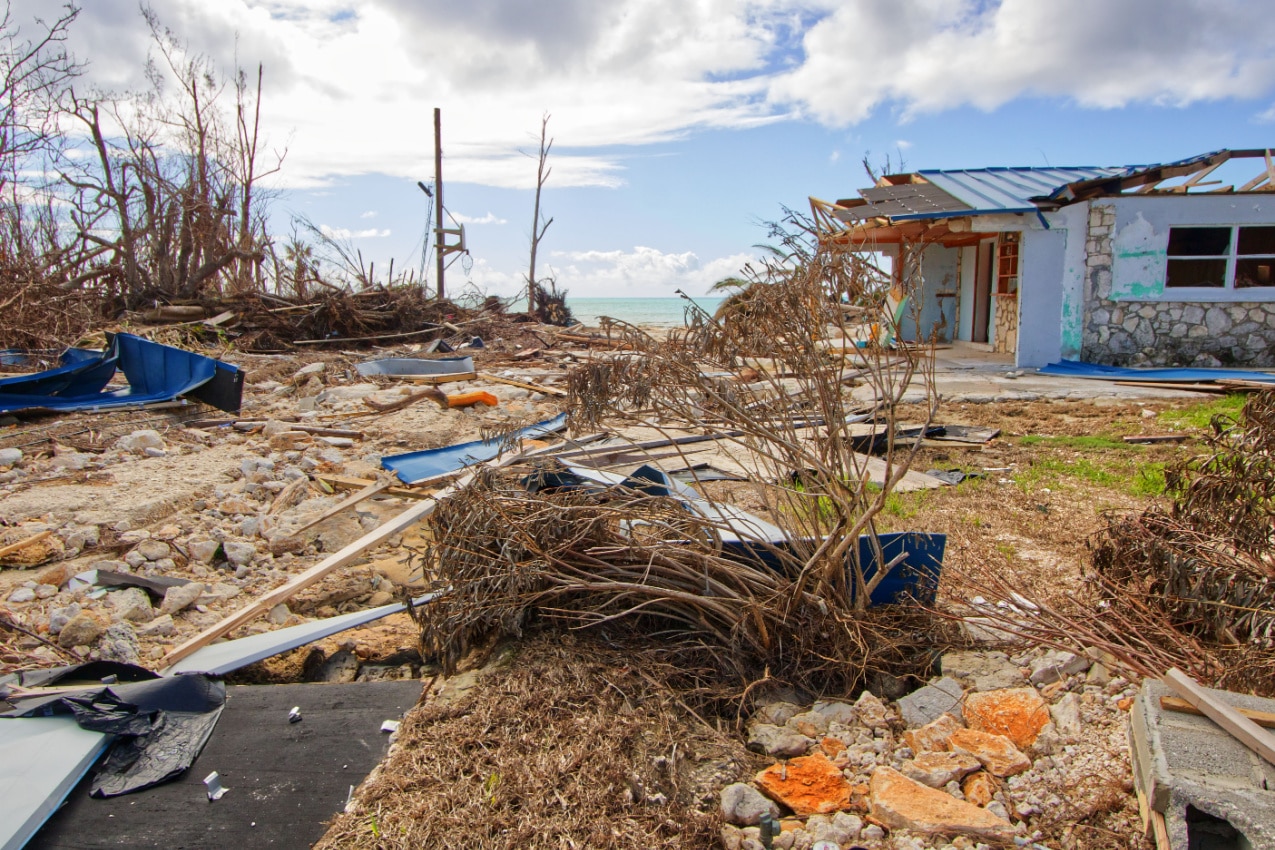
The Bahamas, like many other Caribbean countries, is vulnerable to natural disasters, particularly hurricanes and earthquakes. Let’s learn more about their magnitude and whether they pose a safety risk to tourists.
Hurricane Information and Precautions
The official hurricane season in the Bahamas is from June 1 to November 30, but a hurricane can happen in other months. The risk is highest in August, September, and early October.
On average, the Bahamas faces about seven hurricanes a year, and the parts most affected by hurricanes are West Grand Bahama, North Abaco, and Bimini. Strangely, these hurricanes usually don’t hit the islands directly but change course before they do. Even so, they bring strong winds and rain.
All in all, the Bahamas can experience hurricanes, but these storms usually don’t pose a direct life-threatening risk. Additionally, most hotels have evacuation plans in place. However, it’s a wise move to stay informed about the latest hurricane updates in the area. If there is the possibility of a hurricane, we recommend that you adjust your travel plans.
Earthquake Information and Prevention
Earthquakes can lead to structural damage, tsunamis, and various secondary hazards.
The Bahamas are located on the North American Plate, which is generally a stable region in terms of earthquakes. Although the Bahamas can experience occasional minor earthquakes, they are typically of low magnitude and infrequent.
In 2023, the Bahamas only experienced four earthquakes, which is minimal. The strongest earthquake in the Bahamas in 2023 had a magnitude of 5.4 and occurred in Bombardopolis, Nord-Ouest, Haiti, a separate island nation in the Atlantic Ocean, but the tremors were felt in the surrounding area.
All in all, you shouldn’t be overly concerned about earthquakes when planning a trip to the Bahamas. However, it’s good practice to stay updated on the latest reports in the region and adjust your vacation plans accordingly.
Breathing Safely in the Bahamas: Carbon Monoxide Awareness and Prevention
Carbon monoxide is a dangerous, undetectable, and odorless gas, and every year, it poisons around 420 people in the United States. So what makes carbon monoxide so hazardous?
This gas is produced when carbon-based fuels don’t burn completely. It can escape from malfunctioning appliances like stoves, gas water heaters, and furnaces, and because it’s essentially invisible, our senses can’t alert us to its presence.
When you breathe in carbon monoxide, it blocks the blood’s ability to carry oxygen to your cells and tissues. Depending on how long you’re exposed to it, it can lead to symptoms like headaches, nausea, and dizziness or more severe outcomes such as paralysis, brain damage, and even loss of life.
Unfortunately, the Bahamas suffered the tragic loss of three American tourists to CO poisoning during their vacation at the Sandals Resort in 2022. They went to sleep and never woke up, falling victim to this silent threat.
Remarkably, a simple device known as a CO detector could have prevented this tragedy. Because of that, the Royal Bahamas Police strongly encourages all citizens and rental companies to install these detectors outside every sleeping area in their homes, rental units, and hotels.
However, when you travel to a destination, you can’t always be certain if there’s a functioning carbon monoxide detector in the room to protect you. To ensure your safety, it’s advisable to carry a portable CO detector. These devices are not costly (~ $20) and have the potential to save lives.
Given the very real threat of carbon monoxide poisoning, it’s good to know that avoiding it is simple. Simply carry a portable carbon monoxide detector with you, as your accommodation may not have one, and this way, you’ll have an extra layer of protection.
The Safety of Bahamas Beaches
The Bahamas, like many coastal areas around the world, uses a flag system to indicate the safety level of their beaches for swimming.
Here are the various flags you might encounter at Bahamian beaches:
- Green flag: Calm waters, safe for swimming
- Yellow flag: Moderate currents, swim with caution
- Single red flag: Strong currents, swimming isn’t recommended
- Double red flags: Very dangerous, the water is closed to the public
- Red and yellow flag: Swimming area with lifeguards
- Black and white quartered flag: Surfing area, swimming isn’t allowed
- Purple flag: Dangerous marine life
There are a total of 32 shark attacks recorded since 1749. The most recent one occurred on December 5, 2023, off the coast of Nassau, where a 44-year-old tourist from Boston was attacked by a shark while paddleboarding. Two similar incidents occurred in 2022 when a 58-year-old American woman lost her life while snorkeling. A similar incident took the life of a 21-year-old American in 2019.
The U.S. State Department also flags a potential concern for those seeking aquatic adventures. Recreational watercraft rentals, tours, and trips may lack consistent regulation, and certain operators may not have essential safety certifications.
As you soak up the Bahamian sun and dive into its crystal-clear waters, exercise caution. Avoid swimming alone or at night when sharks may be more active. Choose tours wisely, opting for those with reputable safety records and always stay informed about local weather conditions and marine alerts before embarking on water-based adventures.
Bahamas Weather Patterns: What to Expect?
The climate in the Bahamas is tropical, featuring a hot and rainy season from May to October and a cooler, dry season from November to April.
Average temperatures typically range from 80 to 90°F (26 to 32°C) in the summer and 70 to 89°F (21 to 31°C) in the winter. The wet season spans from May to October, with the rainiest months being July, August, and September. Nevertheless, the showers are usually in the afternoon and pass quickly.
The Bahamas are blessed with over 300 days of sunshine each year. The shortest day falls on December 21, with 10 hours and 35 minutes of daylight, while the longest day arrives on June 21, providing 13 hours and 42 minutes of daylight.
The Bahamas encompass an impressive array of over 700 islands. To provide a more detailed look at the climate, we’ll focus on the capital, Nassau, which is also the most popular destination for tourists.
Weather Overview in Nassau, Bahamas
Summer
As summer kicks off, Nassau welcomes long hours of daylight, boasting up to 13 hours and 42 minutes of sunshine. It also marks the start of hurricane season, but don’t worry, as the likelihood of a hurricane making landfall remains relatively low, especially in the early season.
The temperatures also rise, reaching as high as 88°F (31°C), but you should also expect more humidity and a likelihood of rain, with around 17 rainy days.
The hottest months of the year are July and August, with daytime temperatures soaring up to 90°F (32°C). So, make sure to pack sunscreen for those beach days to protect yourself from sunburn.
Scattered afternoon showers are part of the summer experience, adding up to about 19 rainy days during these months. As summer progresses, the hurricane risk becomes more prominent as well, so it’s important to stay tuned to local news reports for your safety.
Fall
The fall temperature hovers around 88°F (31°C) throughout September and October. Given that this period falls within the peak of hurricane season, tourism is notably reduced, with some hotels closing for maintenance and renovation. Therefore, it’s not the ideal time for a visit.
November, however, paints a different picture. It signals the conclusion of both the wet and hurricane season. With fewer rainy days and delightful weather (pleasant 82°F/28°C), this month emerges as an excellent time for travel.
Winter
The beginning of winter welcomes tourists with plenty of sunshine and clear blue skies. Daytime highs are around 79°F (26°C), while nightly lows are around 64°F (18°C). So the weather is usually excellent for this time of year, ensuring you’re not sweltering in the heat or shivering from the cold.
January is the busiest (and most expensive) month in the Bahamas, but the crowds gradually thin out as February approaches. Both months offer similar temperatures, with pleasant daytime temperatures of 77°F (25°C) and cooler nighttime temperatures of 63°F (17°C). Water temperatures reach their lowest point around 77°F (25°C), but the water is still ideal for swimming.
Spring
March welcomes more tourists, particularly due to university students on spring break. The warmest you can expect in the beginning of spring is around 79°F (26°C), yet evenings can still get a bit chilly, dropping to 64°F (18°C). The ocean also warms up to approximately 77°F (25°C).
April is often one of the finest months to visit the Bahamas. This month offers plenty of sunshine, warm daytime temperatures reaching up to 81°F (27°C), and milder nights around 66°F (19°C). Notably, the crowds start to thin toward the end of April, especially those related to spring break.
In May the humidity increases as temperatures continue to rise. Nevertheless, the risk of rainfall remains relatively low, with an average of about 12 rainy days. Daytime temperatures hover around 84°F (29°C), while the nighttime temperatures dip to around 72°F (22°C), and the sea temperature reaches about 81°F (27°C). By May, most of the crowds have dissipated, offering more space to enjoy the beautiful beaches and local restaurants.
When Is the Best Time to Visit the Bahamas?
The optimal times to explore The Bahamas are typically during November or late April. This is when you can enjoy the finest weather conditions, there are fewer crowds, and there’s the smallest risk of a hurricane, as hurricane season is over.
Yet, what defines the “best” time in The Bahamas comes down to personal taste, so the answer to this question is somewhat subjective. For those who want to experience the vibrancy of holiday revelry and celebrations, the winter months of December and January, and, springtime, between March and mid-April, will be their ideal time for a Bahamas adventure.
If you want to enjoy the warmest possible weather, then the dry season, spanning from November to May, is your best bet.
Budget-conscious travelers should also factor in the cost. If you’re on a tight budget, it’s wise to steer clear of the Bahamas during the peak season. Instead, consider the months before or after these peak periods.
In the end, your choice will depend on your personal travel preferences. Consider which month aligns best with your vision of an ideal vacation and plan your travel accordingly!
Exploring Bahamas Solo or With a Family: Is It a Good Idea?
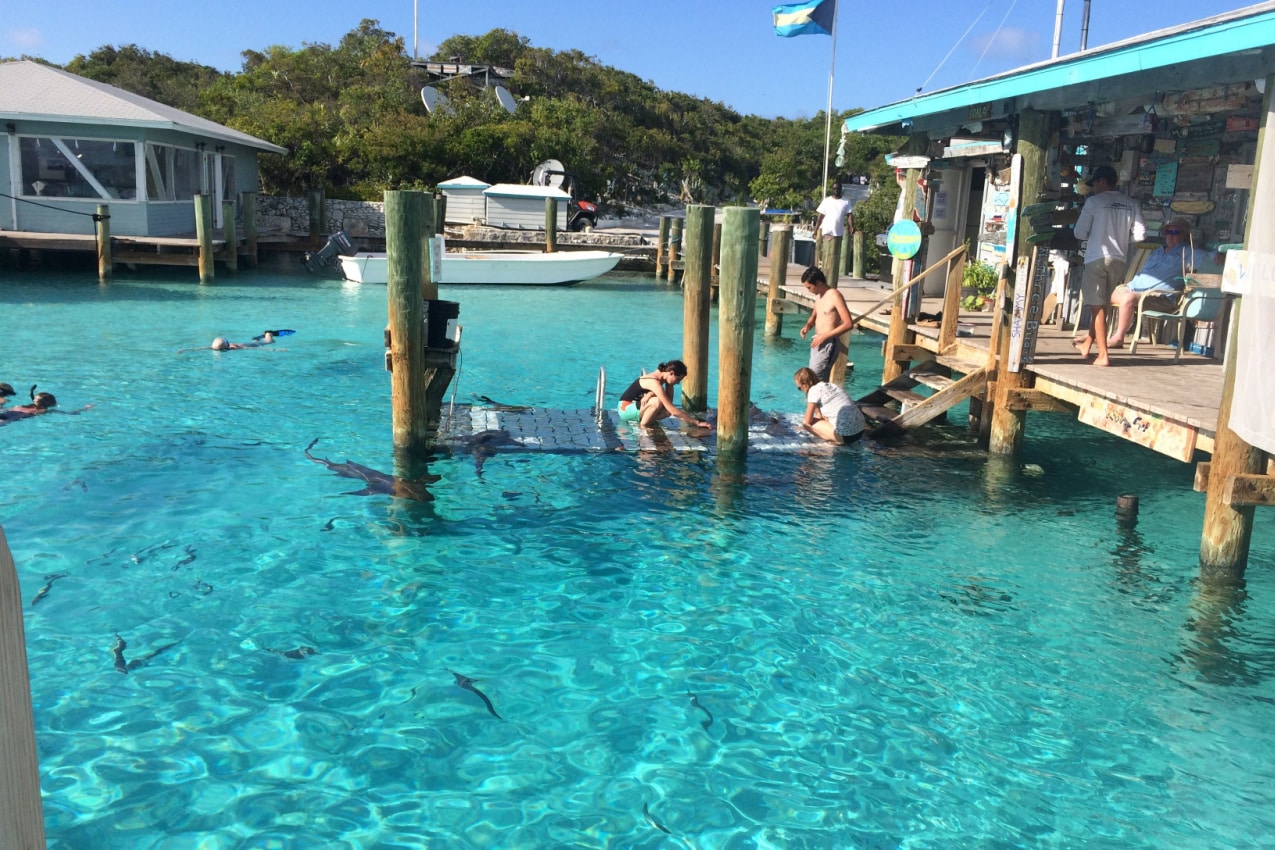
Yes, travelers should consider a solo or family trip to the Bahamas. However, it’s essential to be aware that, as the U.S. State Department’s travel advisory indicates, there are instances of crime in the country. Please take precautions and exercise increased caution while you’re visiting this destination.
Essential Tips for Staying Safe
Before your trip, it’s a good idea to familiarize yourself with the location of the police station nearest to your accommodation on Google Maps. The emergency number for police, ambulance, and fire services is 911.
Prioritize trustworthy hotels with a solid reputation. If you hear someone knocking while you’re staying in your room, it’s essential not to answer your door unless you’re certain about the identity of the person on the other side.
Your sightseeing should be reserved for the day, otherwise, make sure you don’t venture too far from your hotel. And never ever go in secluded neighborhoods and the dangerous areas we mentioned — the Grand Bahama islands and Nassau’s “Over the Hill” area.
While exploring, it’s wise to have some Bahamian dollars (BSD) on hand for small purchases. Be aware that public transportation and ATMs can be targeted by thieves. To minimize the risk, withdraw money from a bank or a mall and don’t attract attention while you’re on the street by wearing expensive jewelry or other valuables. In the event of a thievery, it’s very important not to physically resist because it may escalate the situation and increase the risk to your well-being.
Overall, maintain awareness of your surroundings at all times and respect the local customs and culture, and you’ll have an overall positive experience.
Tips for Traveling Alone
In the spirit of discretion, we advise that you adopt a low-profile approach if you’re traveling solo. For instance, it’s best to stay in during the night, as nighttime outings often come with an increased risk to your safety: there might be intoxicated people creating conflicts, police chasing criminals, etc.
You should always approach interacting with strangers with a healthy dose of caution. This means that you shouldn’t give personal information to someone you just met, like the address of your hotel, phone number, or travel plans.
In terms of apparel, we know you prefer to wear your best clothes on vacation but try not to be extremely revealing. If you hear catcallers, ignore them and don’t give them any reason for further interaction.
It’s also prudent to steer clear of areas densely populated with clubs and bars, especially after dark. If you decide to go to a bar, responsible consumption is key because it allows you to maintain better control over your surroundings and actions.
When you enjoy your drink, never leave it unattended because you run the risk of someone putting a narcotic in it. And when it comes to narcotics, if someone offers them to you, politely decline, as indulging in them can compromise your safety.
Tips for Traveling With Your Family
Vigilance is key when traveling with family, especially with children. Always keep a watchful eye on your kids and ensure that your family members stay together — you don’t want any accidental separation during your travels.
Renting a car offers better flexibility and safety and spares you from constantly having to wait for taxis and buses. However, it’s of the utmost importance to avoid drinking and driving to safeguard the well-being of yourself and your loved ones.
We also think it’s a good idea to carry a well-stocked medical kit, as it provides you with the necessary tools to address minor injuries or health issues. While we’re on the topic of health, make sure you always select reputable restaurants for dining. These establishments tend to prioritize food safety and hygiene, reducing the risk of contracting a food-related illness while you’re on vacation.
That’s a Wrap.
Before you pack those flip-flops, remember the U.S. State Department’s categorization of the Bahamas as a place where you need to “Exercise Increased Caution.” Violent crimes and even shark attacks have occurred recently, so be wary and keep your eyes wide open.
Even in what seems like paradise, you need to be street-smart. Refrain from walking alone at night and avoid high-risk areas. That’s to stay safe from people.
But you also need to stay safe from nature. So, while you soak up the sun, keep your wits about you by keeping an eye on the weather, maintaining water awareness at all times, and making sure the equipment you use or water tours you join are certified safe.
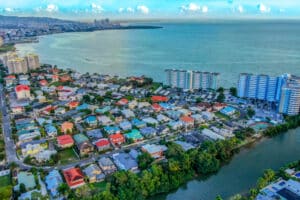
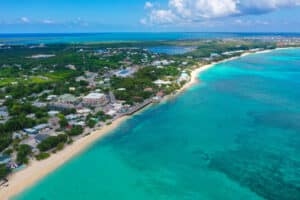
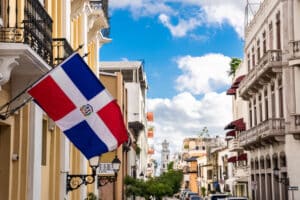
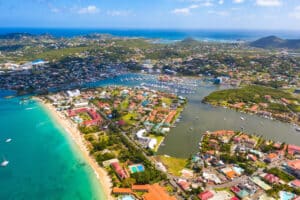
Great info, very informative. Are you a travel agent? Or can you recommend one?
We’re thinking of a Bahamas vacation.
Hi Bill, thank you for reading and glad you enjoyed it. We are not travel agents, but here’s a company that seems good to try.